Media | Articles
Chevy Cosworth Vega: The BMW-fighter that wasn’t
Does anyone remember the Chevrolet Cosworth Vega? A remarkable little car with an interesting story, and a machine that never quite met the promise of its name. Hyped from birth as an import-fighter, the car the media dubbed “CosVeg” lived for just two model years, 1975 and 1976. It could have been so much more.
Available in a host of body styles—two-door hatchback, notchback, wagon and sedan delivery—Chevy’s rear-drive Vega subcompact arrived in dealerships in September of 1970. Motor Trend named it the 1971 “Car of the Year.” Four and a half years later, the limited-production Cosworth Vega performance model hit showrooms. The 2.3-liter, aluminum-block four found in base Vegas was gone, replaced by a 2.0-liter version of the same engine. The key difference lived up top, under a stylish black valve cover: a 16-valve, twin-cam head designed by Formula 1 supplier Cosworth Engineering.

The idea was hatched in 1969. Envisioning 2.0-liter racing championships on both sides of the Atlantic, Chevrolet general manager John DeLorean convinced Cosworth’s Keith Duckworth to develop an all-out racing version of the Vega engine. The first prototype was dyno-tested in March of 1971. The engine proved capable of as much as 290 hp, but it also proved unreliable. The racing effort died.
Back in the States, Vega sales were weak. The available GT model looked nice enough but lacked the image or performance to much help the Vega’s volume. DeLorean and his assistant chief engineer, Lloyd Reuss, proposed a hot Vega powered by a reliable street version of the Cosworth racing engine. With enough power under the hood, they felt, the car could take on the sporting European sedans of the day—machines like the BMW 2002tii and the Alfa Romeo GTV.

Handling dynamics were seen as a Vega GT strong point, so the Cosworth version saw few suspension changes. The GT’s quick, 16:1-ratio steering box carried over. The GT’s front and rear sway bar sizes were adjusted to reduce understeer. On top of that, the Vega’s solid rear axle gained limiting cables to reduce acceleration hop, and the standard four-speed manual received a shorter, 3.7:1 first gear.
Marketplace
Buy and sell classics with confidence
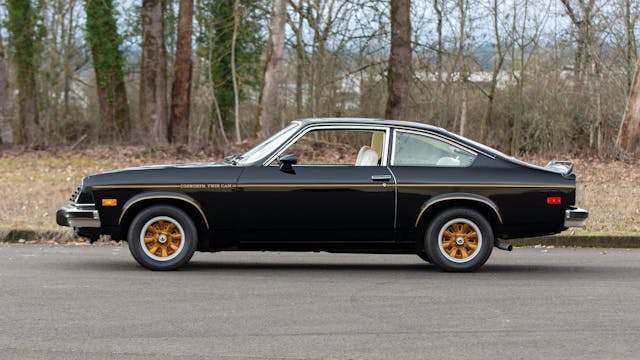
PR can make you, and PR can break you
In August of 1973, a GM press release announced the car. Car and Driver read that release and turned on the hyperbole: “A taut-muscled GT coupe,” the magazine said, “to devastate the smugness of BMW 2002tii’s and five-speed Alfa GTVs. A limited run of 4000 machines, each one built away from the tumult of the assembly line to precision tolerances, as a show of technical force by Chevrolet. All of them will be collector’s items.”
Then came a November 1973 media drive of prototypes at GM’s main proving grounds, in Milford, Michigan. That event produced multiple stories, including one by your author.
In the December 1, 1973 issue of Competition Press and Autoweek, we wrote:
“Accelerating the CosVeg through the smooth Chevy four-speed is an exhilarating experience indeed. It is not a low-end torquer, as you might expect, and getting it off the line in a hurry requires some fancy footwork, high revs, and abundant radial-tire smoke. But once it’s off, it’s off! Zero-to-60 times are consistently under 9 seconds, and quarter-mile times are in the neighborhood of 17 seconds, using the normal 7000-rpm redline.”
With Chevy development engineer Warren Frank in the passenger seat, we flogged the car around Milford’s challenging “Ride and Handling” loop:
“There, it performs admirably, with the only fault being a tricky bump-steer condition, which causes it to lose, momentarily, its remarkably stable and neutral cornering attitude [on] washboard roads. Frank explained that they were still working on shock rates to remedy this, and to keep the wheels on the ground for a larger percentage of the time . . .”
Then we drove a few hard laps around Milford’s road-course-like “Seven Sisters,” a series of four tightly banked turns followed by three faster flat ones:
“…which quickly revealed the CosVeg’s other glaring deficiency in its present state. Unaccountably, Chevrolet has not seen fit to give it a limited-slip differential. The Vega GT suspension, which is otherwise nearly flawless, is just not stiff enough to prevent the car from lifting its inside leg like an impolite dog on the hard, tight turns.
This results in massive wheelspin as all the CosVeg’s considerable power is transferred to the unloaded side, and the car skids helplessly sideways . . . Then the inside tire falls from the sky, finally recovers its bite, and off you go toward a repeat performance on the next turn. This behavior is barely acceptable in a below-average econobox . . . inexcusable in a car of this nature.”
I respectfully suggested that they equip production CosVegs with limited-slips. Frank said he would see what he could do.

The Cossie: Hand-built and high-rpm
The Vega’s aluminum block saw Cosworth duty with relatively few changes. Its stroke was decreased, to give the desirable (for racing, remember) 2.0-liter displacement. That 16-valve, twin-cam, crossflow, aluminum Cosworth head was mated to Bendix electronic fuel-injection. (The CosVeg was the first GM passenger car to use electronic injection.) Thanks partly to an aluminum camshaft housing and an aluminum intake manifold, the engine scaled in at 40 pounds lighter than the 2.3 in the base Vega.
The forged steel crankshaft was chemically “tuftrided,” to harden its bearing surfaces for added durabilty. The pistons were forged aluminum with cutouts for valve clearance. Their large sumps gave the low 8.5:1 compression ratio required for emissions and CAFE compliance, but on the bright side, that conservative spec enabled the stock CosVeg to run well on regular low-lead gas. GM claimed that the development car we tested in 1973 easily met that year’s emission standards without the help of any common “add-ons”—no air pump, no exhaust-gas recirculation (EGR) system, and no carburetor-hot-air (CHA) system.
The bad news? That low compression ratio yielded truly meager output. The engine was originally planned for 12:1 compression, which would have required premium fuel. Emissions-related pullbacks during development saw that figure fall to 10.5:1, then 9.5, then 8.5. Power fell from the originally projected 185 hp to 135, and then, finally, to the production rating of 110 hp, SAE net.
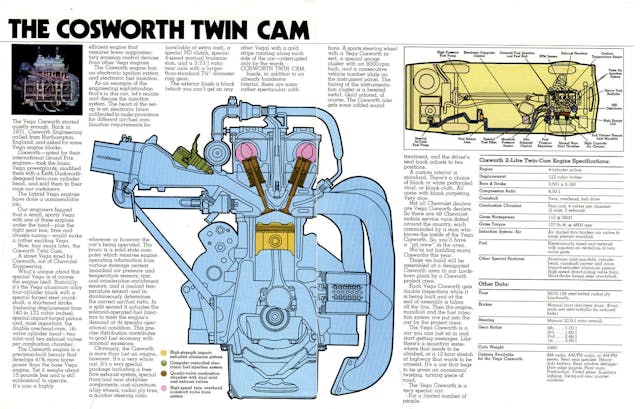
The engines were built by hand at GM’s Tonawanda engine plant in New York, then shipped to the Vega plant in Lordstown, Ohio, where they were carefully installed into cars off to the side of the regular Vega assembly line. Chevrolet announced that Cosworth Vegas would be assembled at a very slow rate at first, to ensure quality control, with production eventually increasing to one car per hour. Buyers, GM said, would get an exclusive toll-free phone number for reaching the factory, and they would receive special attention should anything go wrong.
Just 5000 CosVegs were scheduled to be built that first year. Not coincidentally, this was the minimum number required for homologation for production-based FIA Group 1 “touring car” racing.
Naturally, the government then took another bite. The EPA did not issue the Cosworth Vega a certificate of emissions compliance until March 14 of 1975. Production began immediately after, as Chevrolet rushed to fill the order backlog generated by positive press.
All 1975 CosVegs were black with gold trim. The car’s lightly flared wheel arches were accentuated by gold pinstriping, and a similar stripe swept from headlamps to taillamps, interrupted just forward of the doors by “Cosworth Twin Cam” in gold script. Inside, the standard Vega GT gauge package was framed by a machine-turned aluminum dash tinted gold.

Two cams, two years
The “clean room” assembly area at the Tonawanda plant was originally created for Chevrolet’s aluminum-block, 427-cube ZL-1 V-8. From that space came some 30 Cosworth Vega engines per day. The Lordstown side line could assemble just 1.6 Cosworth Vegas per hour—the regular Vega clocked in at 60 or more. All told, just 2061 CosVegs were built for the 1975 model year.

All that emissions detuning paid dividends: No other General Motors passenger car was emissions-certified for all 50 states. Car and Driver would later announce, in a “History of 0–60” feature story, that a preproduction ’74 Cosworth Vega hit 60 mph in only 7.7 seconds, the fastest time recorded by the magazine for 1975. And while the final production ratings were disappointing—110 hp at 5600 rpm, 107 lb-ft at 4800—after testing a 1975 production model, C/D added, “The outstanding feature of the Cosworth Vega is its excellent balance. Roll-stiffness distribution is ideal, with little understeer entering a turn and just the right amount of drift from the tail as you put your foot down to exit.”
A 1976 facelift brought a wider grill, tri-color taillamps, and extensive improvements in rustproofing. The exhaust system replaced the dual outlets used in 1975 with a single tailpipe, and the base seat trim was changed to grained vinyl. The optional cloth seat inserts were updated to a houndstooth “sport-cloth.” A new Borg-Warner five-speed manual overdrive transmission was made available, paired to a 4.10:1 rear axle. A “Sky-Roof” with tinted and reflective sliding glass could now be had, along with an eight-track tape player, eight new paint shades, and two new interior colors.
All to no avail. In November of 1975, GM decided to kill the car after the ’76 model year. (Volume production for ’76 began in December.) Road & Track reported the CosVeg’s handling as “very good” after testing a 1976 model. Road Test’s 1976 “Super-Coupe Shootout — Alfa vs. Mazda vs. Lancia vs. Saab vs. Cosworth Vega” said,
“Right there at the top, and by a long way . . . is the Cosworth Vega. It had the fastest 0–60 time, the fastest quarter-mile time, and [it] tied with the Saab for the shortest braking distance . . . The Cosworth is American, and a collector’s item, and it came close, damn close, to winning the whole thing.”
If the CosVeg had been as good as promised, if it had been offered at the rumored $4000 price, the story might have been different. Early on, many thought the Chevy would be sold out before the first example hit showrooms. Pricing changes didn’t help. During the seven-year lifespan of the base Vega, inflation and the rising cost of government certification helped bump prices of all new automobiles sold in America by 50 percent. The 1975 CosVeg stickered at $5918, nearly double the cost of that year’s entry-level Vega and less than $900 below the 1975 Corvette.

There was also the car beneath the engine. The Vega itself had grown notorious several issues, from reliability to safety, rust-through, and engine durability. Despite a series of recalls and design upgrades, those problems tarnished the reputation of both the model and its maker.
Just 1447 CosVegs were built for 1976. Combined with the ’75 model year, just 3508 examples of the car were sold. As for those 5000 engines? GM took the leftovers, disassembled 500 of them, then scrapped the remainder. Regular Vega production ended following the 1977 model year.
Two cars, one good-looking Cosworth valve cover, and a lot of unrealized potential. General Motors was troubled in the mid-1970s, and the Vega was part of those wounds. The Cossie version at least had the ingredients for a healing salve. Time will tell if the model’s rarity and that potential is enough to vindicate those CosVeg owners who still carry the torch. In the meantime, we can think about what might have been, and we can dream.

For more info, visit the Cosworth Vega Owners’ Association (CVOA): cosworthvega.com.
Check out the Hagerty Media homepage so you don’t miss a single story, or better yet, bookmark it.

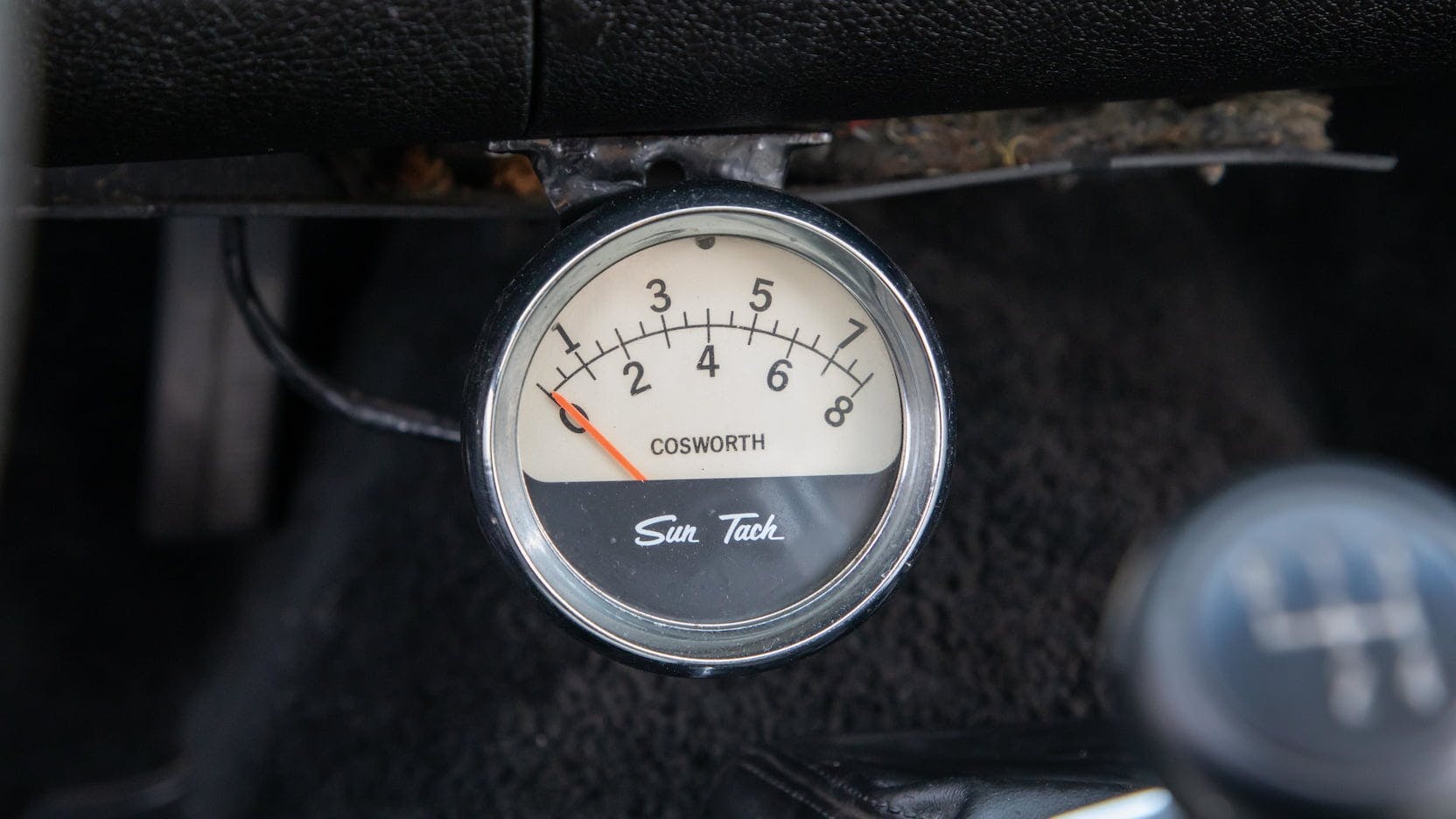
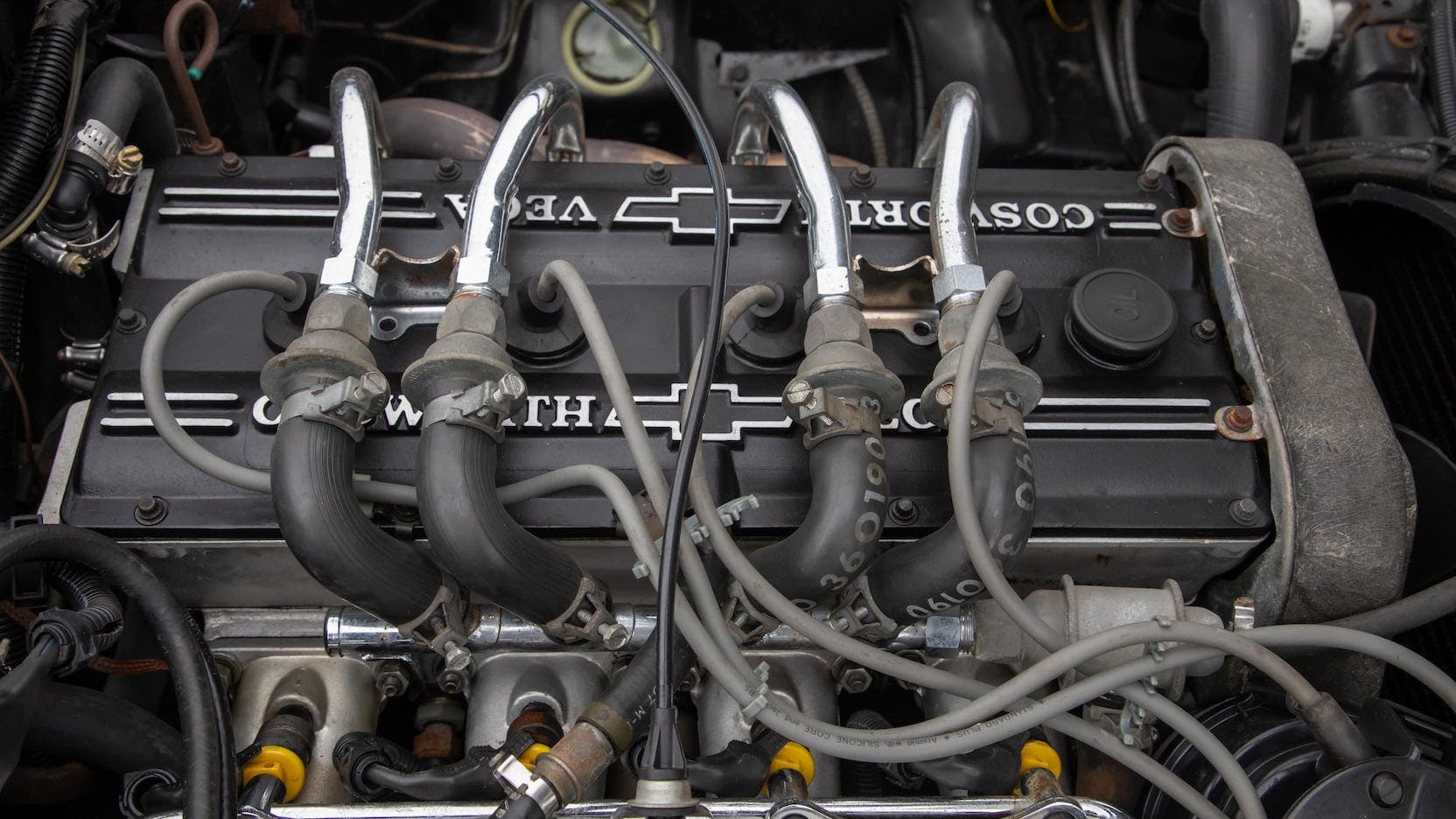
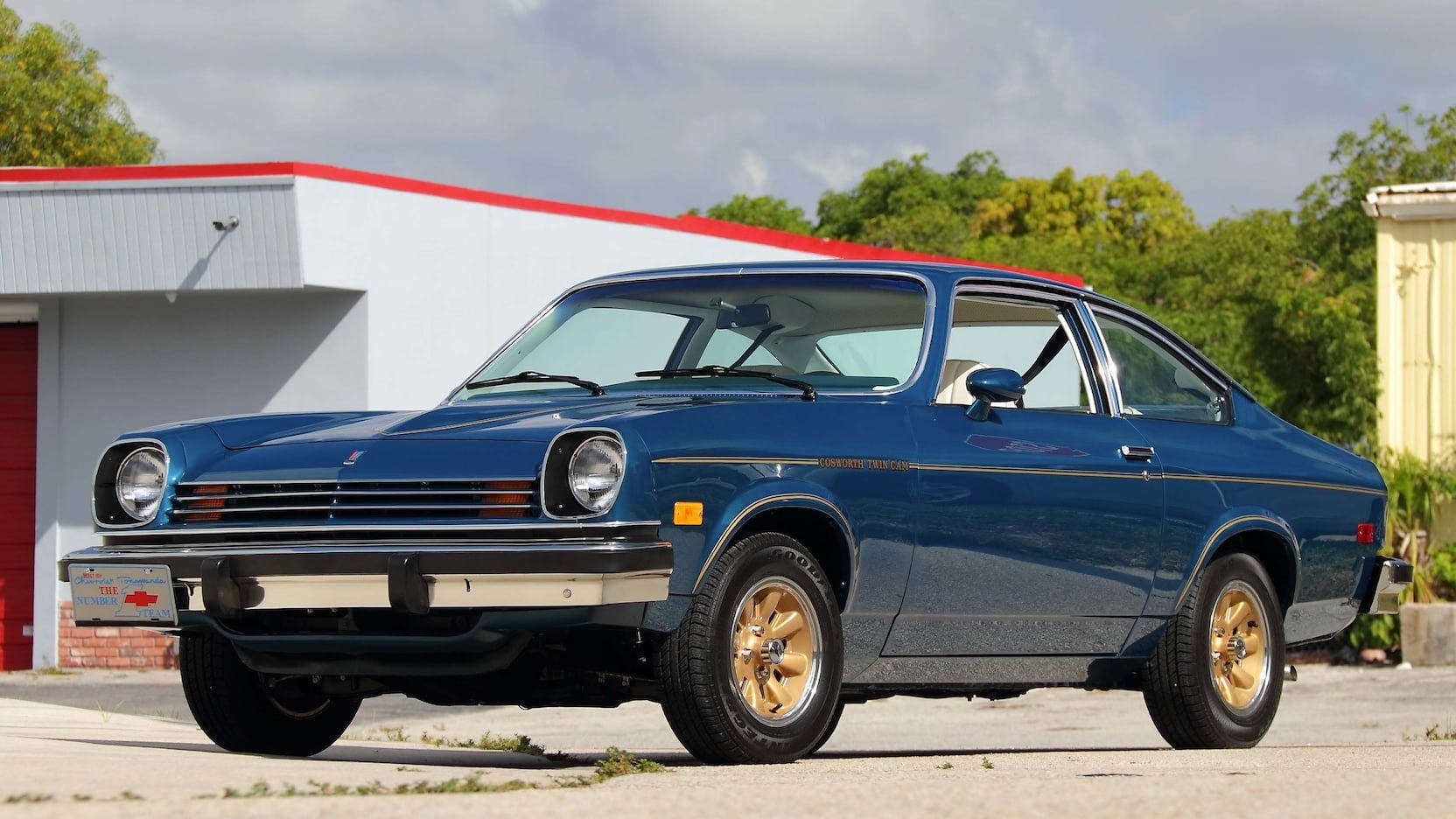
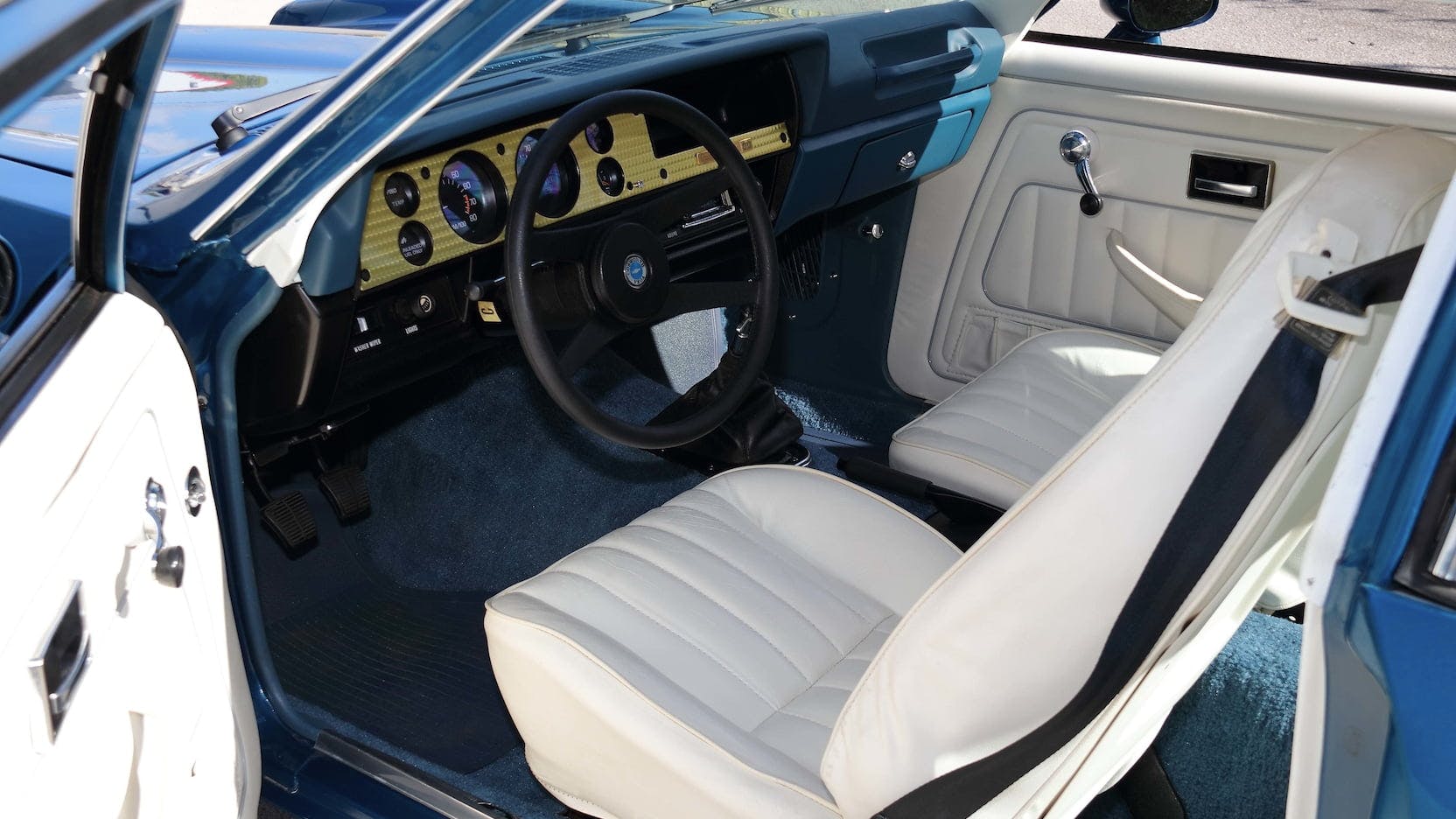












Even though I’ve never owned/driven one, I like the way they look and would gladly make space in my garage for one if I had the spare change to buy one!
The nicest Vega that I had was the 74 GT that I put a Ford 2.8 V6 engine in. I still used the Vega 4 speed transmission. The V6 weighed the same as the Vega 4 cyl. Handling was great, the car with a 6 cyl engine was very smooth. I drove that car for years until structural corrosion ate it up.
Hard to believe that Ford V6 did not weight more than the aluminum Vega 4. Was that particular Ford V6 not an iron-block engine?
Was it out of the Capri 6? That would be an interesting one.
This was another case where DeLorean had the right idea but GM knee capped him.
John when at Pontiac had a vision for them but GM never let him do things the way they needed to be done.
The Vega was an Ed Cole deal John got saddled with and was left with few options to make it right. Imagine if they had got this engine right it could have been formula Chevy vs Ford.
Another failure was Pontiac wanted more power out of an engine. They needed more RPM. Well Herb Adams was given a cam by one of the older engineers. It would hit 7,000 and made all sorts of power.
The trouble was the Production engines were tested to 100 hours at 4500 RPM.
The new cam would make the power but the cast parts would never pass testing. GM refused them the needed parts.
Imagine if they had this engine?
Then there was the 366 Pontiac but that is a story for another day.
The Vega had so much going but it was just never got what it needed. Cole always was big on new ideas but costs usually killed these deals. The Corvair engines was great but cost and emissions hurt it. The Vega . GM’s investment in the Wankle etc.
As usual, great insights!
Still in the throes of the ‘Energy Crisis’, I viewed the Cosworth as being very much the harbinger of Performance going forward, and cars like the ’74 SD Trans Am, very much The Past. A Fuel Injected, DOHC, Stainless Tube Header, ‘light weight’ (for the day) hatchback coupe, with Minilite inspired wheels, and JPS paintwork, was clearly The Future, and the Big 455 ‘Air Pump’, Pushrod, Q-Jet carbed, Scooped, Spoilered, and Screaming Chicken Decal decorated Coupe was the Last Gasp of the Past. Both featured an engine turned dash, lots of camshaft, sporty exhaust, hood bulges, swept headlight and grille treatments, comfy buckets, limited production, Period Correct Sex Appeal, and Dealerships that didn’t know what to make of them; so I had to buy, and keep, both…
Did Herb’s cam come from Mac?
Pretty sure we know one another; what with your GM Intel and having a Greg Pickett front end…
Let’s visit offline!
Or showcased an AWD version with Cosworth. Similar to the Celica All Trac introduced in 88.
I bought a ’74 Cossie because I liked the idea of it and felt that it might be the last ever American small engined performance car. It was a lousy street performance car. Zero lower end and didn’t feel alive until you were going fast enough to attract the wrong kind of attention. I once called the guys at C&D asking how they managed to get their 0-60 times when my barley got out of it’s own way. Response: Rev to 6K and side step the clutch! I did that once and it tore up to 60 but way too abusive. I finally decide to RACE it. Hey, it was zilch until it was being pushed hard. It couldn’t compete with the 280z racers as they had tons more HP. However, it had terrific handling balance and I managed to win races and even a championship in that car. I discovered I could get tech info from “Produce Promotion” with a special number- that was actually Chevrolet Racing! The real issue with the power is that GM corporate had a fit about the noise level and forced Chevrolet to put a quiet muffler on them. I once bypassed the cat and muffler and ran a practice session just to see if it made a difference. It was like it added another 100HP!!! I couldn’t believe the difference and it zapped up to 10K incredibly fast. This got the SCCA officials riled up as it was like I was driving a completely different car. I ran myself out of money racing, parked it, then sold it to a guy who restored it to much better than factory condition. It ended up with a young guy who lived near me and had been inspired seeing/hearing me pass his home with it set up for Showroom Stock racing. He had no idea it was the same car. Small world.
The Chevy Vega was one of the worst cars gmc ever made. I know because I owned a new 1972 Vega that was worn out at 30,000 miles. My opinion the worst car ever built. 🙃
Many people had issues with the Chev Vega. For me no, I had a red 1971 model new from the showroom floor and that car never gave me 1 issue. Had a 2 speed automatic, was my first car and kept it for 3 1/2 years during the college days. You always miss your first car. Several years later went to work with GM as we built the Corvette Assembly Plant in Bowling Green Ky. Several assignments and 36 years later I retired and still miss my old red Vega
LMAO. “You owned ONE”! A 1972 (still early car) and yes they needed much improvement, as was the seemingly new mantra of G.M. – Chevrolet in particular. By the time they got something right, it was the final year or two of production. The Vega was no exception. The best were the 76 and 77. I owned, drove and sold several by the dozens actually of each model year and there were many more good qualities of the cars as there were terrible ones.
it wouldent have been with steel cylinders.
I got a real kick out of the “Cosworth – One Vega for the Price of Two” advertisement. Really gutsy that Chevy thought that would sell the idea!
In 1975, I had my 1967 RS 327 Camaro in for maintenance at Berger Chevrolet. There, near the door, was a black Cosworth Twin Cam. It looked fabulous. So I asked a nearby mechanic what he thought about it and he said, “It’s a Vega.”
That is the full story, in my little opinion.
i bought a brand new ’72 light green Vega from Berger Chevrolet as well, traded my ’70 ½ Z-28 LT-1 in on it during the first gas crisis. What a mistake that was.
No 350 V8 and no automatic transgression, incomprehensible to the average GM customer.
These little flashes of light from American car manufacturers give such hope but are always quickly extinguished.
I worked at the Tonawanda Engine Plant and there were stories that at one time there more engines in for repair than being made.
I owned a 1972 Vega GT coupe. A fun well balanced car to drive, BUT it was the most unreliable vehicle I have ever owned. Chevrolet, and the dealer, told me that 1 quart of oil per tank of gasoline was “normal”!
I remember reading about the Cosworth version, and the fact it took a few years before it arrived. Don’t blame the EPA for delays, the first Cosworth engines failed the emissions durability tests due to burned valves and seats!! Chevrolet could have originally used the very good Opel OHC 1900 engine design, but instead they used the awfull Vauxhaul OHC engine head design in cast iron (to keep costs down) and an aluminum block with NO top deck, so the cylinders tended to walk under the head at high RPM. Cosworth was saddled with a horrible engine to modify! When the Cosworth model finally arrived the price tag was shocking high, and the Vega in general had a horrible reputation. The Pontiac Vega version went to the old pushrod four (from Chevy II, went to Brazil and was refined into a fine engine). Chevy should have done the same and let Cosworth put a OHC head on that block. BTW The Chevy 4 was based on the Chevy six. Pontiac did put an OHC head on the pushrod Chevy six in the mid 60’s and it was well regarded and durable. Oh well, what could have been.
The poor Vega doomed by penny pinching to keep costs down so it could compete against the Japanese imports. While it was suppose bring in young customers to the Chevrolet brand, it’s poor reputation for reliability and sour dealer support sent me, and many other to buy Japanese cars in for decades afterwards.
A decade ago I looked for an early Vega (before the cow catcher bumpers) to install an aluminum V8 from the Rover (Buick/Olds engine from the early 60’s) that weighed about the same as the old Vega engine (it was a done by some back in the 70’s). I could not find one solid example!!! A fun car doomed by cost controls.
Also had a 72 VEGA……..changed two engines…..overheating would cause warped head etc….cute car but poor engine….i have a total redone head for this car…if anyone interested……
On another Vega topic, does anyone know much about the Yenko Vega?
When my dad retired and sold his repair shop business, I discovered several bits of material from Yenko. I don’t know if he was shopping the car or researching upgrades for a customer. Are any Yenko Vegas out there and if so, how did they perform?
I had a Yenko Turbo Stinger Vega for about three weeks, in the winter of ’71-’72. As I understood the situation, Yenko had built 2 of them, which were sent to GM for the emission durability testing, required for sale. Neither car passed/survived the 50K mile testing, and Yenko dropped the idea. Somehow, one of them, with 4,000 miles on the odometer, ended up in the possession of a local Chevrolet Dealer, in the front row of the used car lot. I saw it there while driving home one day, and recognized the car I had read about in the automotive press. It was a red GT hatchback, with a black stripe down the upper side of the car, similar to the one, later seen on the Cosworth version, but the fender lettering said “Turbo Stinger” and a Yenko crest was located lower on the fender. It was equipped with the standard GT 4 spoke steel wheels, and a set of black Bort aftermarket spoilers, front and rear. The interior was stock GT, black vinyl, but the drivers seat was a black cloth racing seat (The original seat came with the car). I took it for a test drive for about an hour, and the while driving,(without the accompaniment of a salesperson) I was fortunate to line up at a traffic light, next to a ’71 Z28 (LT-1). He could surmise the intention of a 20 year old in a performance car, next to him, and we took off on the green, together. we were side by side up to about 65, when the Vega seemed to run out of fuel, and I backed off, where upon, the fuel supply resumed. I was impressed by the performance, enough to return to the Dealership, where I purchased the car, with no warranty, for $3,300. The turbo was fed by the stock 2BBL carb, from a Holley electric fuel pump and regulator. The same condition presented itself, every time I took the car through the gears at full throttle. I searched around to find a mechanic, that could solve the issue, but no Chevy dealer would work on it, and none of the mechanics I approached knew anything about turbochargers. I finally wrote a letter to Yenko, asking for information, and all they sent me was a illustration of the setup, and a wiring diagram, for the fuel pump. I finally gave up on it, and traded it back to the dealer that sold it to me, for a leftover ’71 Vega sedan delivery, 4 speed. I kept the original seat from the Yenko, as the sedan delivery came standard with only a driver seat. the trade was even up, although the new Vega stickered at about $1,100 less. Lesson learned, I sold the new Vega about 9 months later, with 17K miles on it after 2 warranty alternator replacements, and still waiting for a back ordered choke rod that the car came without from Lordstown (or it was robbed by a mechanic, to fix another customers car), which would have made it undrivable, with a automatic, when cold. Because of the roughness of the engine when cold, I had to tighten the cam cover screws every month or so, to keep the gasket from leaking. Have never bought another car from GM. Yenko did make a Stinger version of the Vega, without a turbo, which was just a stripe package, probably to use up all the stripes they had commissioned for the Turbo, which never went into production. I should of just stored that car away for 50 years, just think what it might be worth to a Yenko collector now. Another guy from my town bought it from that dealer, and blew up the turbo engine, about two weeks later, and replaced it with a standard engine.
Ohhhh, my Vega has a first name, it’s D-U-M-P-S-T-E-R,
My Vega has a second name, it’s F-I-R-E
Oh I love to drive it every day, and if you ask me why I’ll saaaaaay,
That Chevrolet it has a way of making lots of C-R-A…………p.
Gary, my Friend, Great Article!
Not as obscure as some GM What-Coulda-Shoulda-Woulda-Beens, but pretty close. They really don’t get the ‘Love’ that some of the others do, like the disaster ‘Vettes of the same era. I was always enamored with ‘Silhoutte’ cars, and found a ’76 Vega Nomad (w/o the usual H-Body Cancer) to mate with my ’75 Cosworth, but ended up selling the Wagon as ‘Another Project Too Far’. The current project is my ’64 GTO-’65 El Camino, TTA mash-up; sorry, Purists…
Among Enthusiasts, the questions, always in retrospect (20/20, right?), inevitably gravitate toward, “How come GM-Ford-Mopar didn’t build more _________? Fill in the Blank…
At the Dealer level, we were always in the Line of Fire for similar questions regarding Availability, Price (and the inevitable discounts; “But what’s MY Price?), Options, etc…
I was fortunate enough, and patient enough, to gather unto me a number of rarities; not so much for investment, but for the satisfaction of ownership and personal enjoyment. To me, that’s the crux of the hobby. To Have, and to Hold, enjoy for what it is, or what you can make it into, and not worry, moan, or complain about how it doesn’t fit your own sensibilities…
“It is not the Critic who counts…the Credit goes to the Man who is actually in the Arena…”
Teddy Roosevelt
We last met at a clandestine Pontiac Presentation (and impromptu ‘Road Test’) near Agoura Hills; pretty sure you know where that is, for the introduction of the Quad-4 Grand Am; which I believe should have been the GTO, long after the Nova and way before the Monaro versions…
Good to see your byline, again…
Thanks!
Agree, ACE, the Quad4 might have made an exceptional GTO to hold on for the 3.8V6 that performed far beyond. Had a ’94 Bonneville with the 3.8, sold it at 380,xxx miles with no mechanical issues, just body rust. Bought a ’98 Chevy Monte Carlo Z34 that the previous owner gifted with the supercharged 3.8 and transaxle from a fire damaged Bonneville. Torch red and aftermarket rims/Pirellis, that guy gave me 280,xxx trouble free miles- save for the posi transaxle smoking both fronts and a thirst for CV shafts. Best aero of any car I’ve ever owned.
FYI- I own a 40th Anniversary Pontiac/Holden GTO in TorRed, with the no cost optional Tremec 6spd crunch box, which I equipped with an Aussie manufactured version of the B&M Ripshifter.
But as a kid I drove my mom’s ’72 Vega GT, and while slow it handled far better than my friend’s muscle cars, and the 4spd stick was slick like butter. Was black over tan on a two door hatch, white stripe down the middle.
Sadly, it was apparently made of compressed rust, and in ’74 mom got rid of it for a dark green Buick Skylark GS.
I wish GM could pull up the guts to make a modern version of the Cosworth Vega, instead of selling ever more fake “not trucks” to women and eldsters that imagine capabilities where none exist (I’m in Fargo ND, and in winter drive a lifted on 20’s, 6.2 LS/LQ Escalade powered Tahoe with “barn doors” and top line Hankook M+S tires, I yank more women in their “crossovers” out of snow sticks than any other demographic, because they were sold, and believe, that these toys are “real trucks”. Sigh).
A Bolt with JPS trim? Yeah, I think that’d do.
Was interested in buying one new until I saw the price. Our garage did a lot of sleeved Vega’s, not a problem with oil consumption after that.
Always liked the Vega style but never knew about the Cosworth version. Hot little Hot Rod, I’d love to own one.
The only interesting thing to me in this flawed car is the Cosworth motor.
I learned to drive stick in a neighbor’s wagon and my sister had a base hatchback for college until the head cracked. The first Cos I saw was a black hatchback at a dealer in my mom’s tiny hometown of Wyalusing PA. I always thought the wheelwells were too small for the body size and didn’t support the “go fast” look.
and thats the flaw.